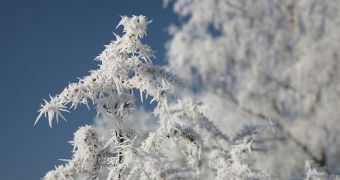New studies are beginning to shed more light on the interplay of factors that can influence the harshness of winters affecting the United States. The latest such work indicates that even the amount of snow falling on Siberia has an influence on winters in North America.
Coupled ocean-atmospheric phenomena such as El Niño, La Niña and the Southern Oscillation are known to play a significant role in modeling the US climate, but thus far the role of Siberian tundras and snowfall has largely gone unnoticed.
The new study looks at how snowfall covering numerous tundra regions – spanning from Siberia all the way to northern Europe – can influence weather patterns across the Atlantic Ocean. Preliminary results are suggesting that this may have just as much influence as the other three phenomena.
The correlation works in advance, the team behind the new work suggests. That is to say, the amount of snow falling over northern Eurasia during the fall will affect winters in the US the following year.
Experts say that more precipitations in these regions would lead to a harsher winter on the other side of the globe, whereas less snowfall translated into a smoother, warmer winter for the US and Canada.
Thus far, seasonal climate forecasts have never taken this factor into account when creating predictions that inform public policies. What the new investigation suggests is that this oversight should be corrected as soon as possible, Our Amazing Planet reports.
When northwest Eurasia is covered with extensive autumn snow, temperatures in the center of North America drop the following winter by as much as 7 degrees Fahrenheit (3.8 degrees Celsius) below average levels for that period.
The fact that Eurasia affects climate halfway around the world has been known for years, but the new study is the first to pinpoint the exact locations on the former that underly this climate connection.
“One difficulty in comparing previous studies is that they have used multiple definitions of Eurasian snow cover. Our work looked at the role of various key areas of Eurasian snow cover on atmospheric circulation,” explains scientist Thomas Mote
The expert, who was the author of the new study, holds an appointment as a climatologist at the University of Georgia in Athens. Details of the work appear in the May 17 print issue of the International Journal of Climatology.

 14 DAY TRIAL //
14 DAY TRIAL //